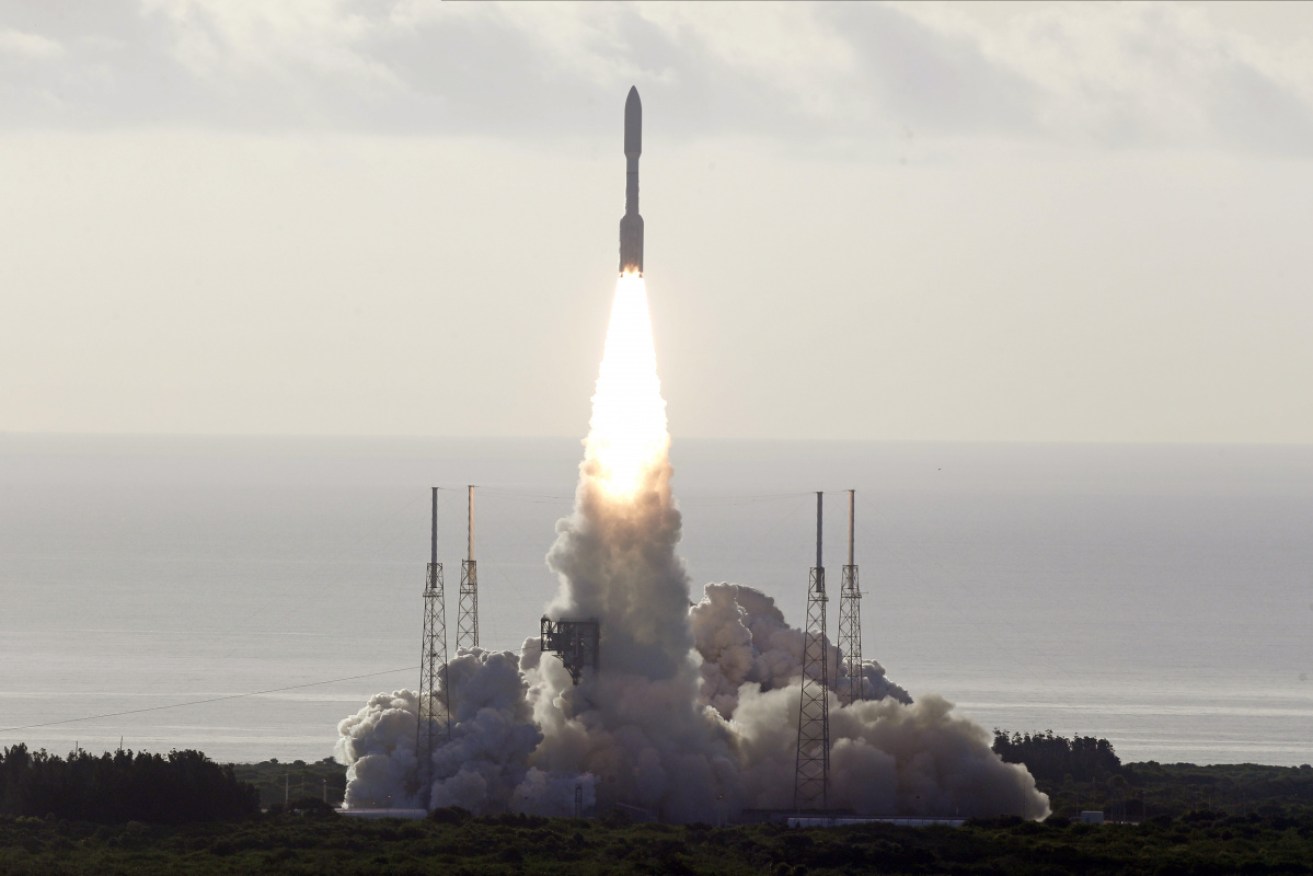NASA’s Mars rover launches successfully


A United Launch Alliance Atlas V rocket lifts off from pad 41 at the Cape Canaveral Air Force Station. Photo: AAP
A car-sized NASA spacecraft carrying a mini-helicopter has overcome technical issues and blasted off for a six-month-long trip to Mars where it hopes to discover traces of potential past life.
NASA’s Perseverance rover is scheduled to land in Mars’ Jezero Crater on February 18 and for the first time in history attempt to bring Martian rock samples back to Earth.
Not long after launch, the robotic rover – a six-wheeled vehicle carrying seven scientific instruments – encountered an unexpected temperature condition and had to boot into safe mode.
Part of the spacecraft was “a little colder than expected” after blasting off from the Cape Canaveral Air Force Station in Florida.
A full health assessment was conducted while it was still in the Earth’s shadow. Soon after, NASA confirmed it had returned to normal.
The launch took place after the Jet Propulsion Laboratory (JPL) facility in Pasadena, California, where its mission engineers were located, was rattled by an earthquake.
Tweet from @NASA
“The spacecraft is in good health and on its way to Mars,” NASA administrator Jim Bridenstine wrote on Twitter.
JPL mission controllers established their first communication signal with the spacecraft some 90 minutes after lift-off, prompting applause and cheers in the California control room.
The mission which cost $US2.4 billion ($A3.4 billion) marked NASA’s ninth journey to the Martian surface.
“It’s really kind of a key of a whole bunch of new research that we’re doing that is focused on the question … is there life out there?” the space agency’s science division chief Thomas Zurbuchen said on a NASA live stream after the launch.
Jet Propulsion Laboratory Director Mike Watkins joked about the California quake, saying it was “just the Earth being excited about going to Mars”.
“It was a very minor event,” he said.
“Everything’s fine, and we’re on our way to Mars.”
Tweet from @NASA
Perseverance is due to land at the base of a 250m-deep crater called Jezero, site of a former lake and water system from 3.5 billion years ago that scientists suspect could bear evidence of potential past microbial life.
Scientists have long debated whether Mars – once a much more hospitable place than it is today – ever harboured life.
Water is considered a key ingredient for life, and Mars billions of years ago had lots of it on the surface before the planet became a harsh and desolate outpost.
This was the third launch from Earth to Mars this month, following probes sent by the United Arab Emirates and China.
US Vice President Mike Pence wrote on Twitter: “Today is a great day for American leadership in space!”
On board Perseverance is a 1.8kg autonomous helicopter named Ingenuity, which is due to test powered flight on Mars.
The thin Martian atmosphere – 99 per cent less dense than Earth’s – poses a challenge to Ingenuity, which was designed to be light, with rotor blades that are larger and spin more quickly than what would be needed for a helicopter of its mass on Earth.
Since NASA’s first Mars rover Sojourner landed in 1997, the agency has sent two others, Spirit and Opportunity.
-with AAP








